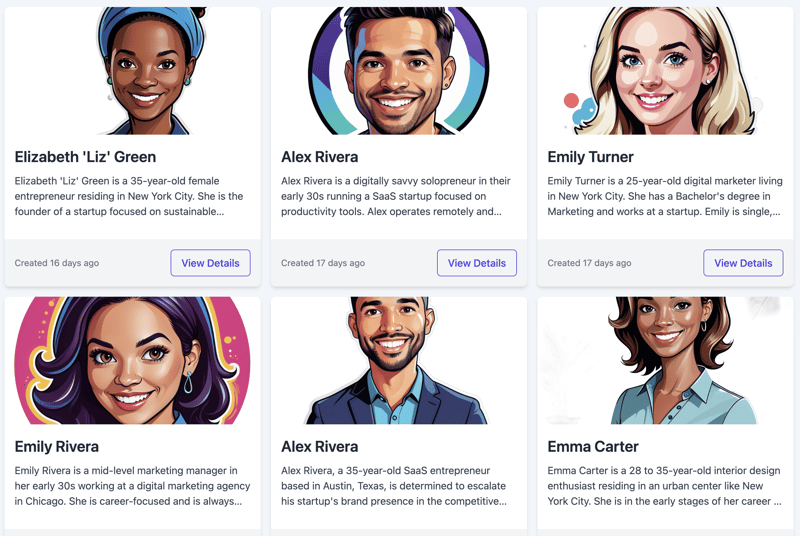If you are an Indie Maker, or a Saas Builder, you know that you can't skip the marketing stuff. But you're skiping it aren't you ?... (Well, then at least read this article, and reach the end of this article for a surprise !)
And those 34 visitors last week, and no paying users, didn't bring you the cash flow for the nomad lifestyle you bought.
But fear not ! Sales is a game of volume. But of targeted volume. Find your niche, find your clients, and you'll make money.
The only reason why you can fail, is if you go red-headed into building a solution for months before caring about your users needs.
But yes, we are developers and we love to code.
So how to make your marketing time and spending just as efficient as possible, so that you can spend more time building ?
You will ruin your efforts and bankrupt if you are spending money on the wrong horse ! And you will also go bankrupt if you don't invest in marketing.
So, let's jump in !
Understanding your potential customers is the key to driving business growth. One of the most effective ways to truly know your audience is by developing detailed customer personas.
A customer persona is a semi-fictional representation of your ideal customer based on real data and research. Personas help you understand your customers better - their behaviors, motivations, goals, and challenges. With this valuable insight, you can tailor your products, messaging, and overall experience to meet their specific needs.
Creating personas is an essential exercise for businesses of all sizes, products, and industries. Whether you're a small startup or a global enterprise, having well-crafted personas will fuel more resonant marketing, smoother user experiences, and ultimately, better sales.
In this guide, we'll walk through the full process for developing rich, insightful customer personas that will transform how you approach your business in 2024 and beyond.
Why Are Customer Personas So Valuable?
Before we dive into the steps of persona creation, let's discuss why this exercise is so worthwhile:
Personas humanize your customers. Rather than looking at people as numbers and data points, personas help you truly empathize with real people's wants, needs, and pain points. This human-centric view shapes better experiences.
They provide focus and alignment. Personas give your whole team a clear, unified vision of who you're designing for. This focus prevents going too broad and trying to be everything to everyone.
Personas fuel more relevant marketing. With detailed personas, you can craft messaging that speaks directly to your audience's interests, challenges, and motivations. No more one-size-fits-all content.
They improve user experiences. Understanding how different user personas behave and what they value allows you to design smoother product experiences tailored to their needs.
Personas minimize assumptions. Rather than relying on hunches, personas are grounded in real research about your customers' lives. This insight replaces guesswork.
Spending 3 hours detailing your Persona is just what you need !
(Source : me)
The Key Steps of Creating Customer Personas
Now that we understand the "why" behind personas, let's dig into the actual process of developing them. Here are the essential steps:
Step 1: Conduct audience research
The first step is gathering as much data as possible about your target customers through quantitative and qualitative research methods like:
- User surveys and interviews
- Website analytics and heatmaps
- Customer service logs and inquiries
- Social media listening
- Reviewing reviews and testimonials
- Studying industry reports and market research
During this phase, you'll want to ask exploratory questions to uncover key persona details like:
Demographics
- Age, gender, location, income level, job, education
- Family status, living situation
Psychographics
- Goals, motivations, and aspirations
- Values, interests, and personality traits
- Attitudes, lifestyles, and hobbies
Behaviors
- Typical day and responsibilities
- Media and information sources used
- Buying process and objections
- Challenges, pain points, and needs
Product Experience
- How they discover and use your product/service
- Desired features and use cases
- Reasons for purchasing or churning
The more comprehensive your research, the richer and more insightful your eventual personas will be. Don't make assumptions - let the data tell their real stories.
Step 2: Identify your major persona groups
Once you've gathered a wealth of audience data, look for patterns and commonalities that allow you to segment your customers into distinct persona groups.
Some common ways to categorize personas include:
- Demographics (age, location, income level, etc.)
- Roles and responsibilities (job titles, industries, etc.)
- Goals and motivations (what they want to achieve)
- Skill levels and experience (beginner, advanced user, etc.)
- Attitudes and behaviors (pragmatic, spontaneous, etc.)
Most businesses will identify between 3-7 key customer personas that represent their major audience segments. Any more than that and your personas become too fragmented to be truly useful.
Step 3: Flesh out your persona details
With your main persona groups defined, it's now time to build out comprehensive profiles for each one. Treat these personas as real people by giving them names, faces, identities, and backstories.
Here are some of the key details to capture for each persona:
Persona Name and Photo: Choose a representative name and stock photo to make the persona feel realistic.
Demographics: Age, gender, location, job, income level, education, family details.
Identifiers: A few quotes or descriptive phrases that capture their voice and personality.
Goals and Motivations: Their main personal and professional goals, as well as core motivations.
Values and Interests: Their beliefs, attitudes, hobbies, media habits, and general lifestyle.
Challenges and Pain Points: The problems, frustrations, and obstacles they're facing.
Buying Process: How they discover, evaluate, and make purchasing decisions for your product/service.
Product Needs: The key features and use cases they require to achieve their goals.
Sources of Information: Where they go for recommendations, news, and industry information.
Objections and Concerns: Potential roadblocks that could prevent them from buying.
The more specific and narrative you can make each persona, the easier it will be to truly understand them as real people. Don't just list out dry facts - craft a story around who they are.
To illustrate what a comprehensive persona looks like, let's walk through a fictional example:
Persona Name: Health-Conscious Hannah
*Photo: *
A smiling woman in her late 20s/early 30s doing yoga
Identifiers: "I try to live as naturally as possible." "My wellness routine is really important to me."
Background:
Hannah is a 29-year-old wellness blogger and social media influencer living in Los Angeles. She's passionate about holistic health, fitness, and sustainable living.
After struggling with an autoimmune condition in her early 20s, Hannah adopted a clean, plant-based diet and committed to an active lifestyle. She now feels healthier than ever and wants to inspire others to live their best lives too.
Hannah has a bachelor's degree in communications and previously worked in marketing before leaving to build her personal brand full-time. She lives with her husband and rescue dog in a trendy LA neighborhood.
Demographics:
- Age: 29
- Location: Los Angeles, CA
- Job: Wellness Blogger / Influencer
- Income: $85,000 / year
- Education: Bachelor's Degree
- Relationship: Married
Goals & Motivations:
- Grow her blog and social following to become an influential voice in the wellness space
- Maintain a healthy, balanced lifestyle aligned with her natural living values
- Inspire and empower others to take control of their wellbeing
- Earn enough income from her blog and partnerships to work for herself
Challenges & Pain Points:
- Difficulty managing her time and staying organized with content creation
- Feeling overwhelmed by her many projects, commitments, and responsibilities
- Skepticism from some audiences about her lack of professional health certifications
- Concerns about burnout and maintaining a sustainable work/life balance
Values & Interests:
- Passionate about holistic health, fitness, nutrition, and sustainability
- Loves being outdoors, doing activities like yoga, hiking, and gardening
- Interested in personal growth, mindfulness, and spiritual practices
- Enjoys cooking, traveling, and spending time with loved ones
Buying Process:
Hannah is heavily influenced by recommendations from other influencers and trusted sources she follows. She's willing to invest in premium products and services aligned with her wellness values.
Before making purchases, Hannah extensively researches online by reading reviews, watching videos, and joining discussions in communities she's a part of. She's wary of"greenwashing" marketing and values authenticity and transparency.
Product Needs:
- Healthy food and beverage products that are organic, plant-based, and sustainably sourced
- Fitness, yoga, and meditation apps with high-quality content and instructors she resonates with
- Productivity and content creation tools to streamline her blogging workflow
- Natural beauty, personal care, and home products in line with her natural living ethos
Information Sources:
- Follows other wellness influencers, bloggers, and thought leaders on Instagram and YouTube
- Subscribes to health and wellness podcasts and newsletters to stay informed about the latest trends and research.
- Participates in online forums and Facebook groups dedicated to wellness and natural living.
- Attends wellness events, workshops, and retreats to connect with like-minded individuals and brands.
Objections & Concerns:
- Wary of products that make unsubstantiated health claims or use misleading marketing tactics.
- Concerned about the environmental impact of products and seeks out brands with strong sustainability practices.
- Prefers to support companies that are transparent about their ingredients and sourcing.
With this detailed persona example, you can see how every aspect of Hannah's life influences her buying decisions and interactions with brands. By understanding her deeply, a company can tailor its marketing efforts, product development, and customer service to meet her specific needs and preferences.
Step 4: Validate and refine your personas
After creating your initial persona drafts, it's crucial to validate them with real users. Share your personas with members of your target audience and gather feedback. Are the personas accurate and relatable? Do they miss any critical details? Use this feedback to refine and adjust your personas until they truly resonate with your audience.
Step 5: Share and apply your personas across your organization
Once your personas are finalized, it's important to share them with your entire team. Ensure that everyone from marketing to product development to customer service understands who they are serving. Incorporate persona insights into every aspect of your business strategy, from content creation to UX design to sales approaches.
Best Practices for Effective Persona Creation
To ensure your personas are as effective as possible, follow these best practices:
- Base your personas on real data, not assumptions. The more research you do, the more accurate your personas will be.
- Keep your personas focused and avoid unnecessary details that don't impact decision-making.
- Use a consistent template for all your personas to make them easy to understand and compare.
- Avoid stereotypes and make your personas as realistic as possible.
- Regularly review and update your personas as your audience and market evolve.
Recommended Tools and Templates for Persona Creation
Several tools and templates can help streamline the persona creation process:
- PersonaBuilder.co : The most complete Persona Builder tool. You just need a short description, or a link to your website to generate your persona.
- Hubspot's Make My Persona tool: An interactive online tool that guides you through the persona creation process.
- Xtensio user persona templates: A platform offering customizable persona templates that you can adapt to your needs.
- Hotjar's persona building guide: A comprehensive guide with tips and best practices for creating data-driven personas.
So, ready to stop coding and start marketing ?
Creating detailed customer personas is a powerful way to deepen your understanding of your audience and tailor your business strategies to meet their needs. By following the steps outlined in this guide and using the recommended tools and templates, you can develop personas that will drive more effective marketing, product development, and customer experiences.
Remember, personas are not static; they should evolve as your business and market change. Keep researching, refining, and applying your personas, and you'll be well on your way to building stronger connections with your customers in 2024 and beyond.
Update April 2024 :
We created a Tool and get a complete persona profile adapted to your product in minutes !
Check our the Persona Creation tool : PersonaBuilder.co












Top comments (0)